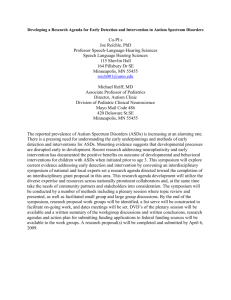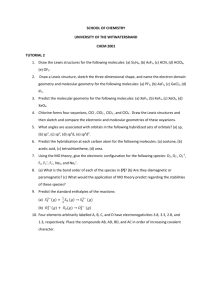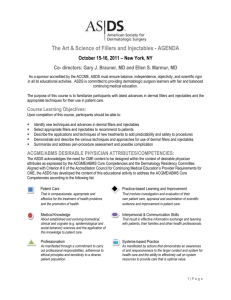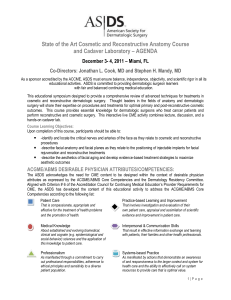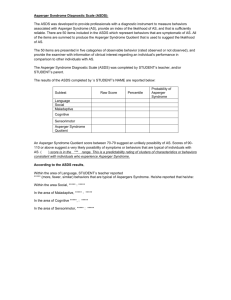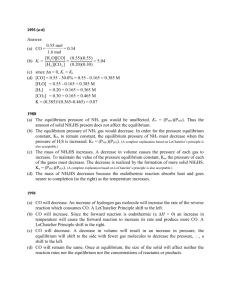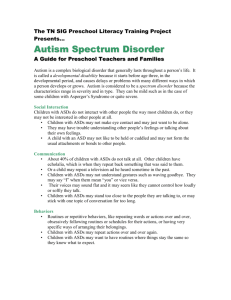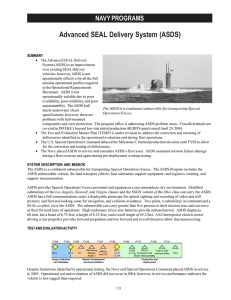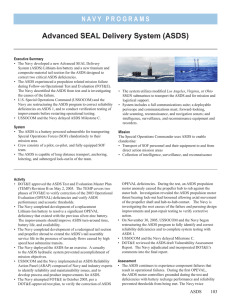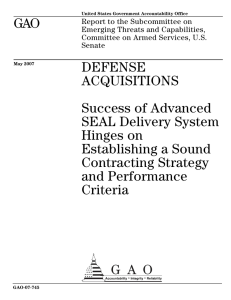T Advanced Seal Delivery System (ASDS) NAVY PROGRAMS
advertisement
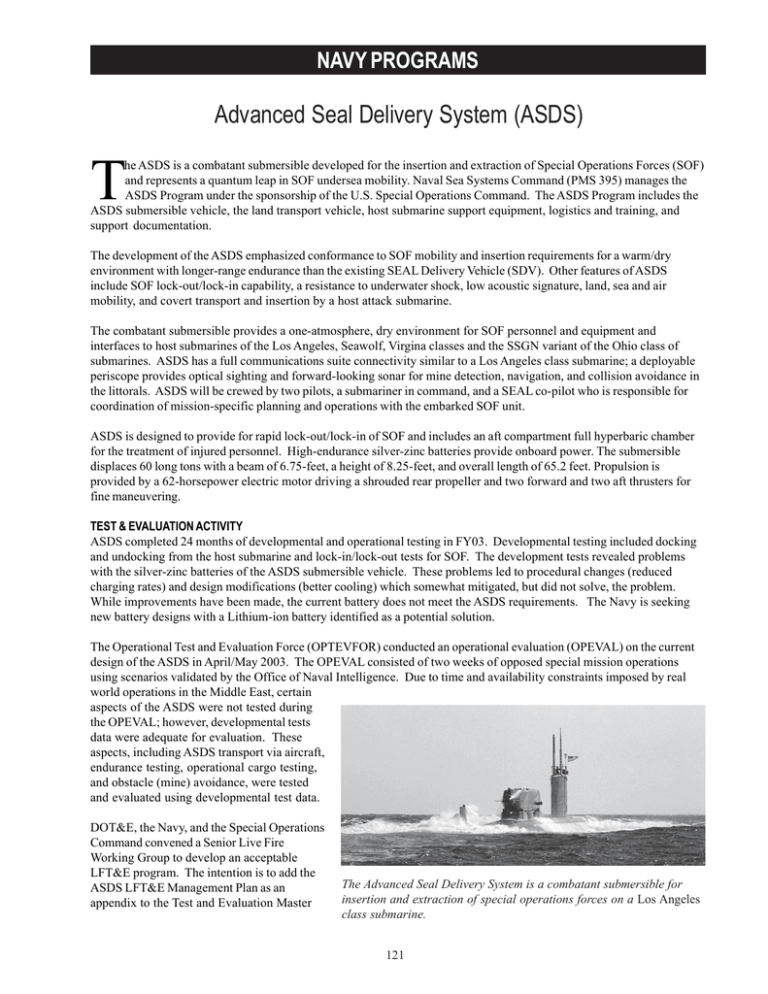
NAVY PROGRAMS Advanced Seal Delivery System (ASDS) T he ASDS is a combatant submersible developed for the insertion and extraction of Special Operations Forces (SOF) and represents a quantum leap in SOF undersea mobility. Naval Sea Systems Command (PMS 395) manages the ASDS Program under the sponsorship of the U.S. Special Operations Command. The ASDS Program includes the ASDS submersible vehicle, the land transport vehicle, host submarine support equipment, logistics and training, and support documentation. The development of the ASDS emphasized conformance to SOF mobility and insertion requirements for a warm/dry environment with longer-range endurance than the existing SEAL Delivery Vehicle (SDV). Other features of ASDS include SOF lock-out/lock-in capability, a resistance to underwater shock, low acoustic signature, land, sea and air mobility, and covert transport and insertion by a host attack submarine. The combatant submersible provides a one-atmosphere, dry environment for SOF personnel and equipment and interfaces to host submarines of the Los Angeles, Seawolf, Virgina classes and the SSGN variant of the Ohio class of submarines. ASDS has a full communications suite connectivity similar to a Los Angeles class submarine; a deployable periscope provides optical sighting and forward-looking sonar for mine detection, navigation, and collision avoidance in the littorals. ASDS will be crewed by two pilots, a submariner in command, and a SEAL co-pilot who is responsible for coordination of mission-specific planning and operations with the embarked SOF unit. ASDS is designed to provide for rapid lock-out/lock-in of SOF and includes an aft compartment full hyperbaric chamber for the treatment of injured personnel. High-endurance silver-zinc batteries provide onboard power. The submersible displaces 60 long tons with a beam of 6.75-feet, a height of 8.25-feet, and overall length of 65.2 feet. Propulsion is provided by a 62-horsepower electric motor driving a shrouded rear propeller and two forward and two aft thrusters for fine maneuvering. TEST & EVALUATION ACTIVITY ASDS completed 24 months of developmental and operational testing in FY03. Developmental testing included docking and undocking from the host submarine and lock-in/lock-out tests for SOF. The development tests revealed problems with the silver-zinc batteries of the ASDS submersible vehicle. These problems led to procedural changes (reduced charging rates) and design modifications (better cooling) which somewhat mitigated, but did not solve, the problem. While improvements have been made, the current battery does not meet the ASDS requirements. The Navy is seeking new battery designs with a Lithium-ion battery identified as a potential solution. The Operational Test and Evaluation Force (OPTEVFOR) conducted an operational evaluation (OPEVAL) on the current design of the ASDS in April/May 2003. The OPEVAL consisted of two weeks of opposed special mission operations using scenarios validated by the Office of Naval Intelligence. Due to time and availability constraints imposed by real world operations in the Middle East, certain aspects of the ASDS were not tested during the OPEVAL; however, developmental tests data were adequate for evaluation. These aspects, including ASDS transport via aircraft, endurance testing, operational cargo testing, and obstacle (mine) avoidance, were tested and evaluated using developmental test data. DOT&E, the Navy, and the Special Operations Command convened a Senior Live Fire Working Group to develop an acceptable LFT&E program. The intention is to add the ASDS LFT&E Management Plan as an appendix to the Test and Evaluation Master The Advanced Seal Delivery System is a combatant submersible for insertion and extraction of special operations forces on a Los Angeles class submarine. 121 NAVY PROGRAMS Plan. The Navy and DOT&E are nearing an agreement on the nature and content of the LFT&E program, and the LFT&E Management Plan is now close to adequate. TEST & EVALUATION ASSESSMENT OPTEVFOR evaluated ASDS operationally effective and suitable under certain specified threats and environments and provided several recommendations including necessary improvements to the battery, sensors, and logistical support. OPTEVFOR recommended correction of deficiencies and vulnerabilities verification in an additional phase of OPEVAL. ASDS maintainability and reliability is poor due to low battery service life, low charging and cooling rates, and electrical grounds. During OPEVAL, low main motor controller electrical grounds reduced the endurance and cruise speed and resulted in a loss of ASDS propulsion. Onboard crew repairs enabled completion the OPEVAL SOF mission; however, had the crew been unable to affect at sea repairs, the ASDS could have been stranded and required safety ship assistance. Also, during transit in a recent forward site exercise, the ASDS sustained damage. An investigation to determine the cause is underway. In spite of these problems, the ASDS is a clear improvement over the SDV. It has a dry, warm environment, onboard sensor and communications equipment, greater speed, range endurance, and payload capacity. The ASDS system requires further test and evaluation to verify correction of the deficiencies associated with the battery, electrical system grounds, noise signature, and other identified deficiencies. Depending on the near-term schedule for ASDS 1, it is desirable to arrange a trial against simulated threat mines to determine likely burst points (e.g., using the Versatile Exercise Mine System). For ASDS 2, a more robust LFT&E strategy could be applied. Any resulting changes to subsequent vehicles could then be evaluated for backfit on case-bases for ASDS 1. 122
